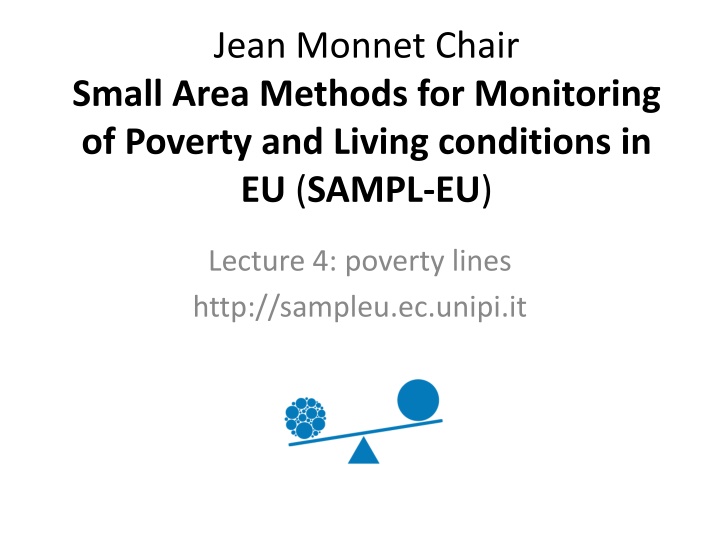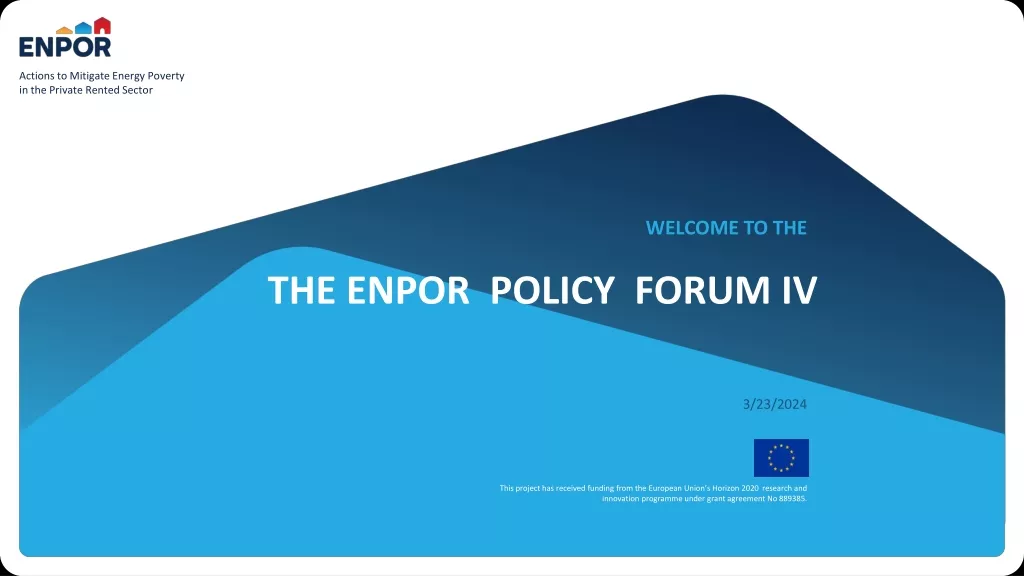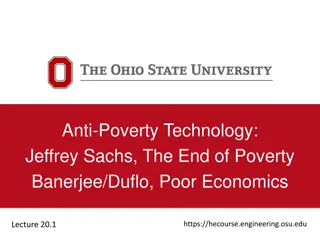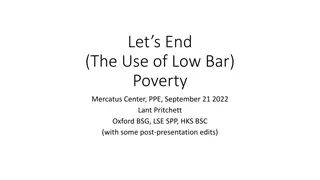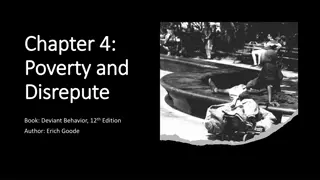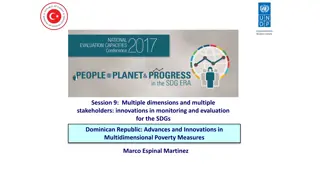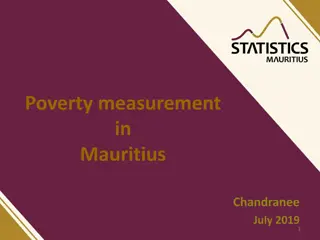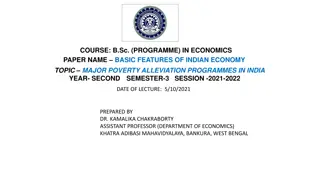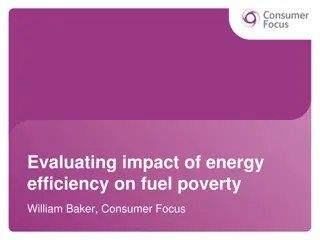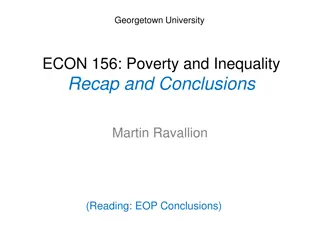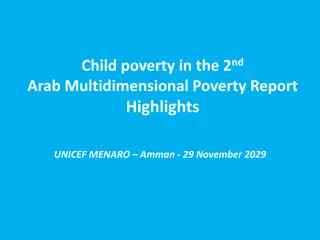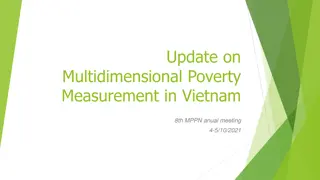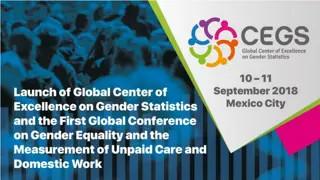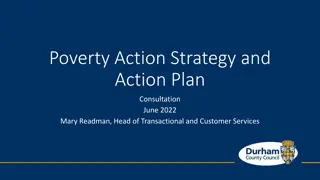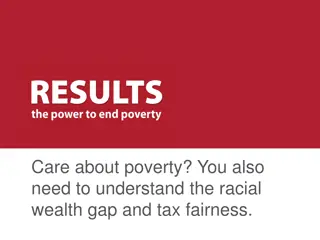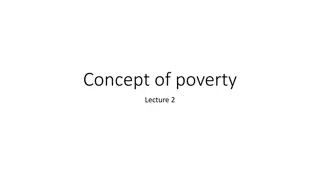Monitoring Poverty and Living Conditions in the EU
This content delves into the nuanced concept of poverty lines, offering formal and pragmatic approaches to defining and adjusting them to assess household needs. It explores the spatial and temporal variability of poverty lines, highlighting the importance of understanding the absolute poverty line as a fixed standard indicator. Through insightful visuals and explanations, the complex dynamics of measuring poverty are unpacked to aid in monitoring and improving living conditions within the European Union.
Download Presentation

Please find below an Image/Link to download the presentation.
The content on the website is provided AS IS for your information and personal use only. It may not be sold, licensed, or shared on other websites without obtaining consent from the author.If you encounter any issues during the download, it is possible that the publisher has removed the file from their server.
You are allowed to download the files provided on this website for personal or commercial use, subject to the condition that they are used lawfully. All files are the property of their respective owners.
The content on the website is provided AS IS for your information and personal use only. It may not be sold, licensed, or shared on other websites without obtaining consent from the author.
E N D
Presentation Transcript
Jean Monnet Chair Small Area Methods for Monitoring of Poverty and Living conditions in EU (SAMPL-EU) Lecture 4: poverty lines http://sampleu.ec.unipi.it
Definition of Poverty ...and Living Conditions
Poverty line: formal approach the poverty line for a household, zi, is the minimum spending or consumption (or income, or other measure) needed to achieve at least the minimum utility level uz, given the level of prices (p) and the demographic characteristics of the household (x).
Poverty line: pragmatic approach .elegant solution, but the minimum utility level uz, is not measurable, the function e(-) is to be defined Solution 1: computing a poverty line for each household, adjusting it from household to household to take into account differences in the prices they face and their demographic composition. This gives a different poverty line for each household.
Poverty line: pragmatic approach Solution 2: constructing one per capita poverty line for all individuals, but adjusting per capita expenditure (or income) yifor differences in prices and household composition. Is adjusted yibelow or beyond the PL? the Poverty Line is presented as a single number.
Poverty line: pragmatic approach Spatial variability of PL: separate Poverty Lines can be constructed for each of some major regions, based on the prices prevailing in those areas (urban vs not urban areas). Time variability of PL: over time, we expect nominal poverty lines to change for a population i) as prices rise (inflaction) nominal PLs increase; ii) the poverty line could change if the real poverty threshold were revised over time.
Absolute Poverty line It is fixed in terms of the standards indicator being used, and fixed over the entire domain of the poverty comparison (Ravallion 1992, 25) No temporal variation: the poverty line is set so that it represents the same purchasing power year after year; Spatial variation is possible
be aware An absolute poverty line is essential if one is trying to judge the effect of antipoverty policies over time, or to estimate the impact of a project (for example, microcredit) on poverty. Legitimate comparisons of poverty rates between one country and another can only be made if the same absolute poverty line is used in both countries.
Absolute and relative PLs The following Table presents absolute and relative poverty headcount rates for different regions in the world. Note: How regions compare with each other depends on which poverty measure is used.
Absolute and Relative PLs Absolute measure of less than $1/day: Sub-Saharan Africa has the highest portion of the population living in poverty. Relative measure (1/3 average national consumption): Countries in Latin America and the Caribbean have the highest portion of their population living below one-third of the average national consumption; in effect, these Latin American and the Caribbean countries are the most unequal societies.
Poverty Lines (a) Distributions 2012 HBS Average monthly Equivalized (Istat) Consumption expenditure (euros) Differences due to different levels of consumption and to different shapes of the regional distributions Spatial heterogeneity of consumption implies the computation of regional PLs: Campania 692,51 Euros Lombardia 1258,46 Euros Z National PL 1015,88 Euros
